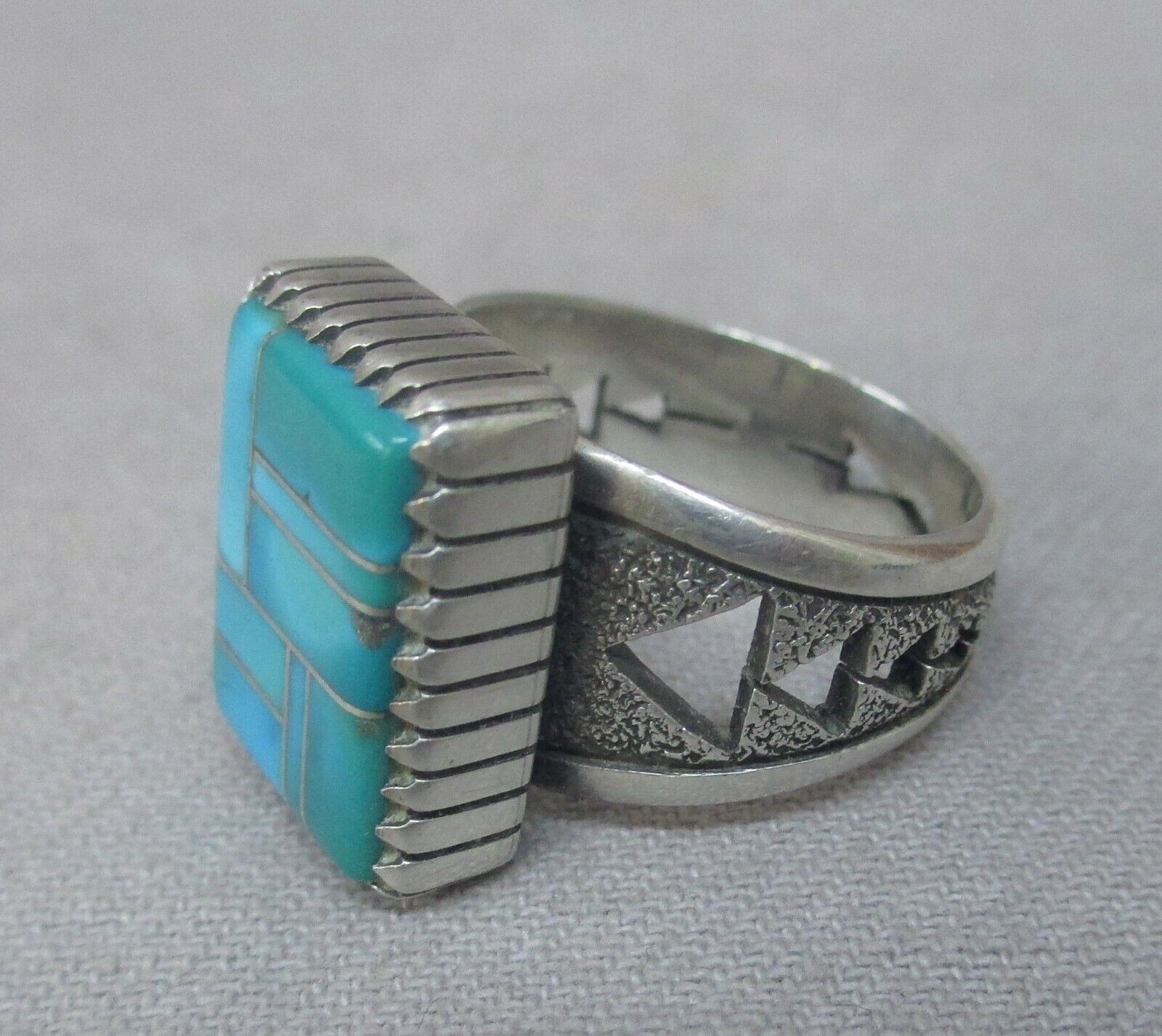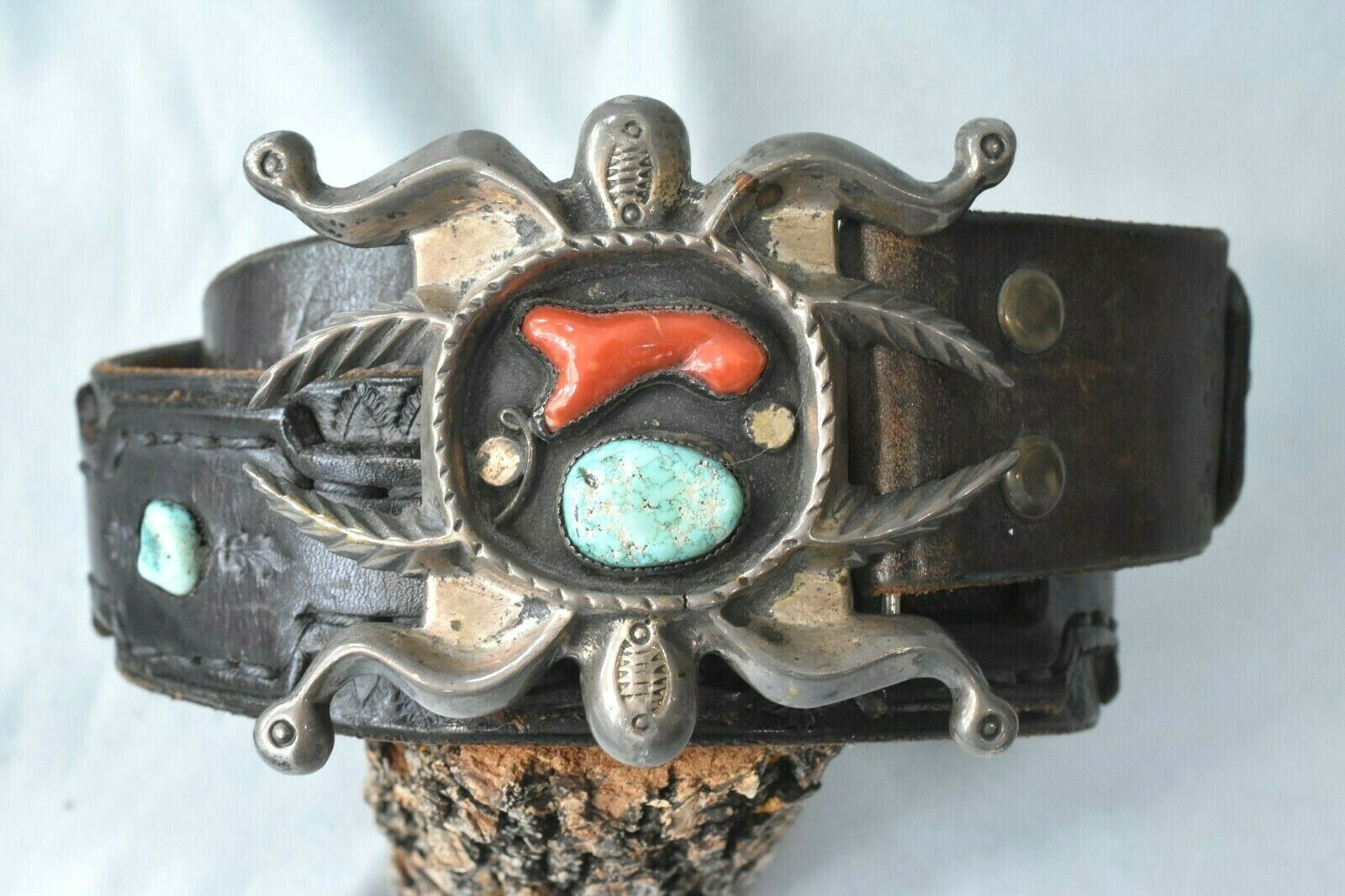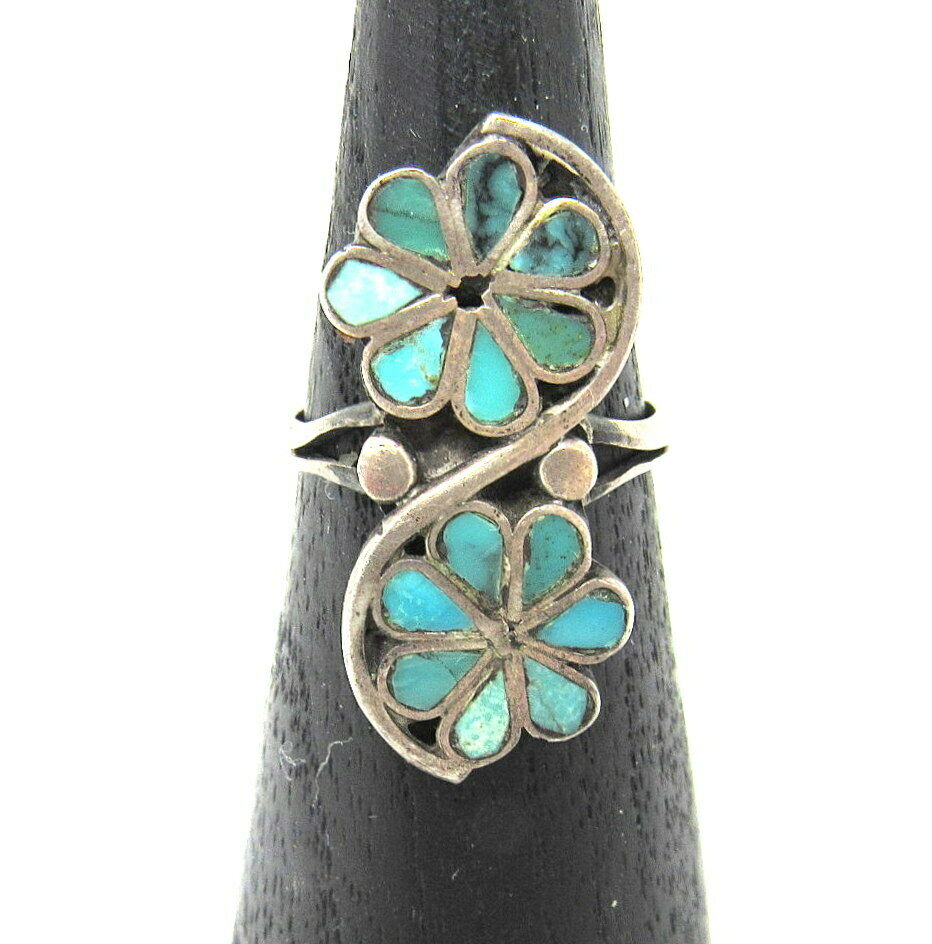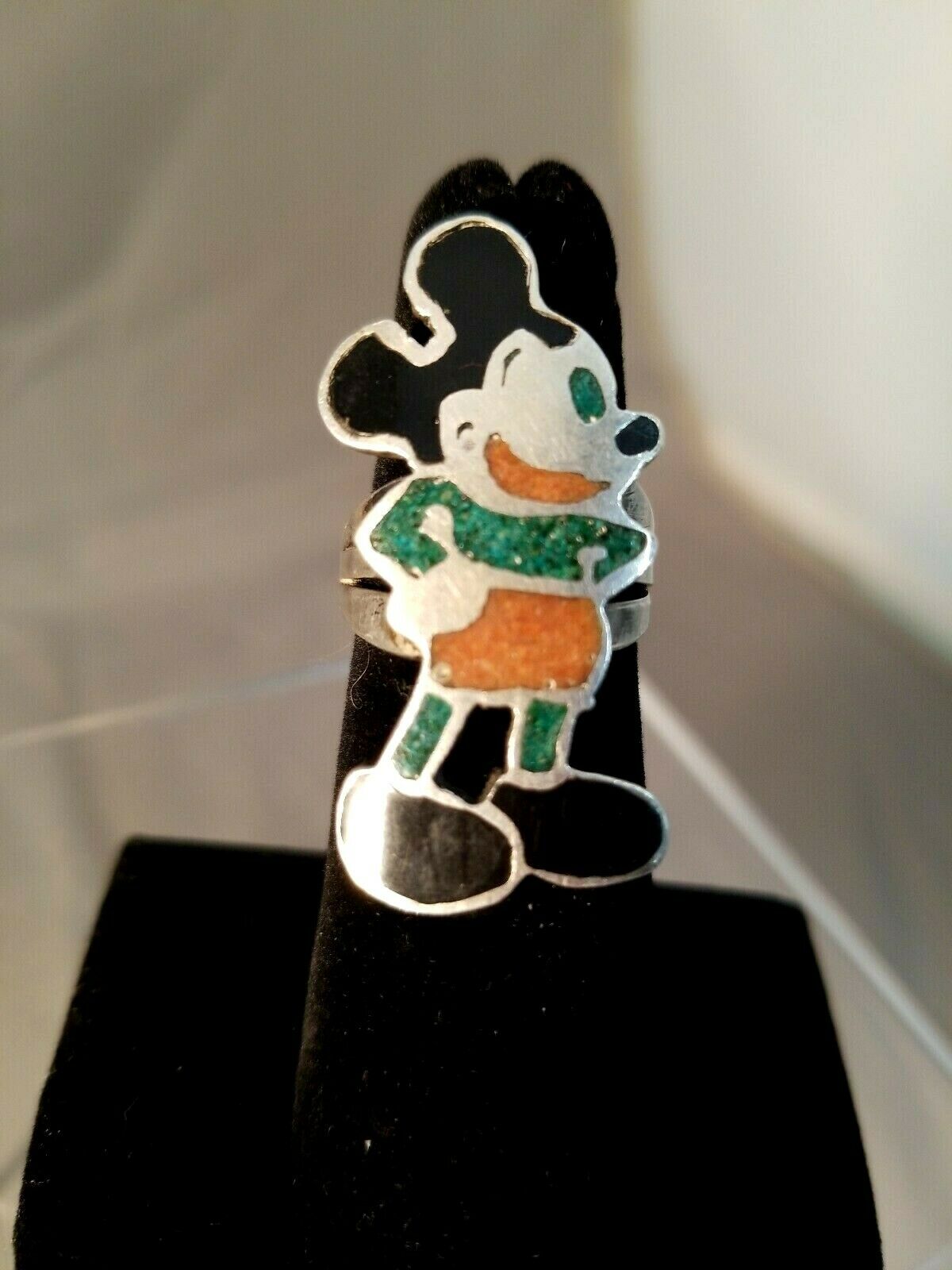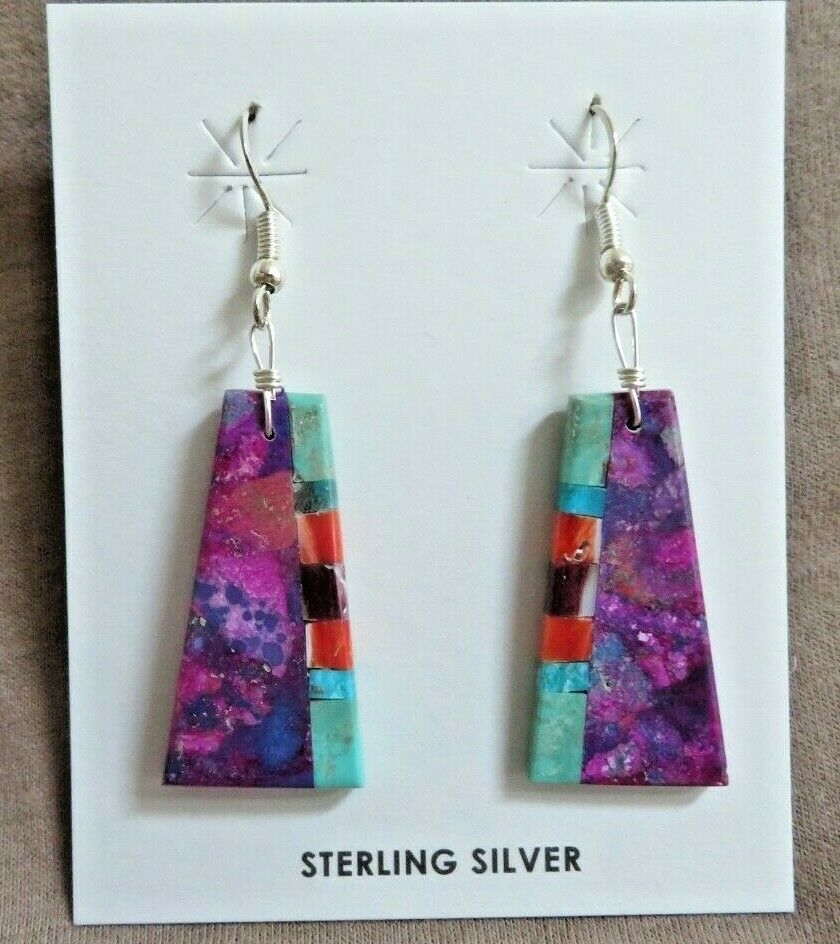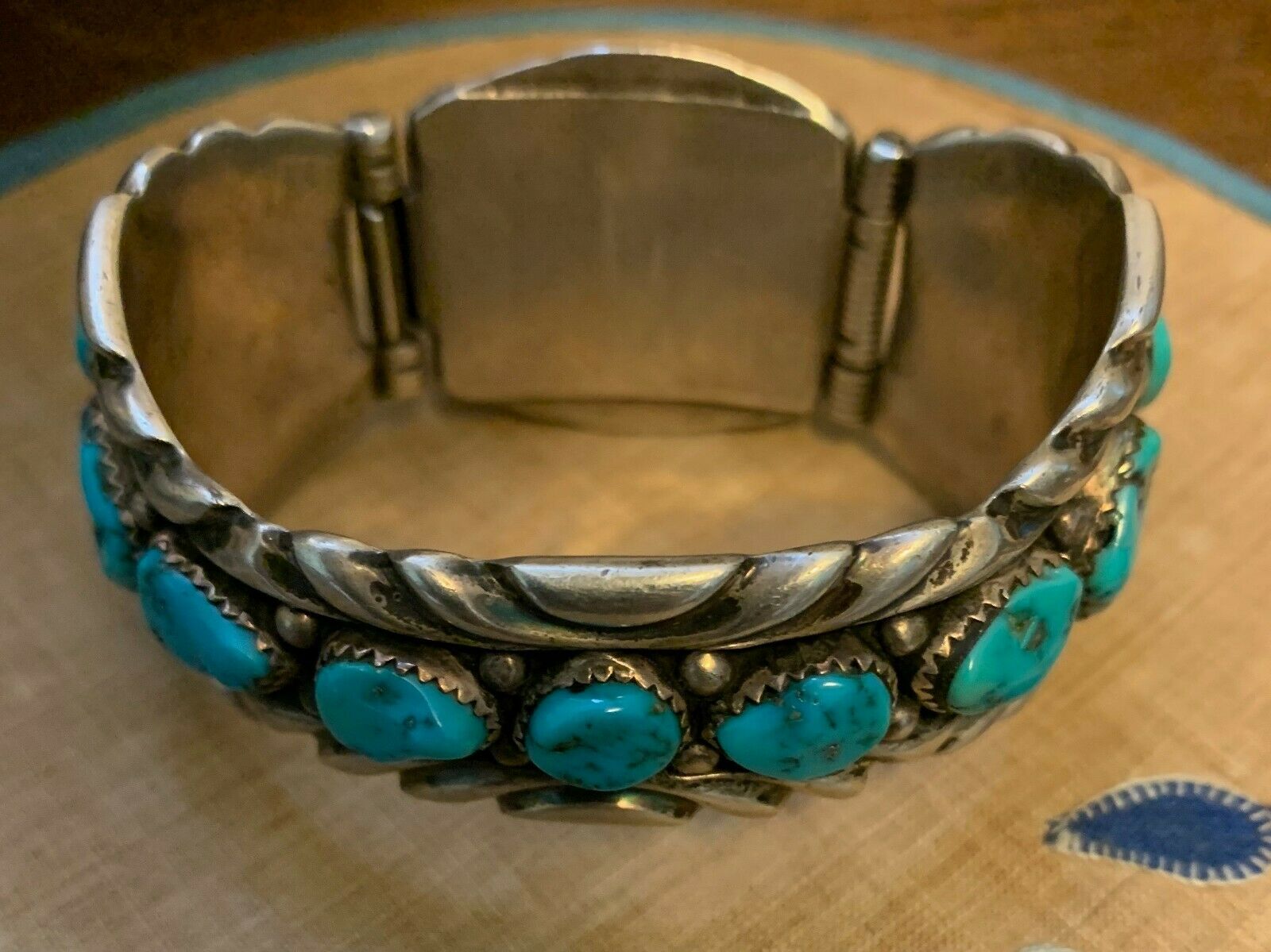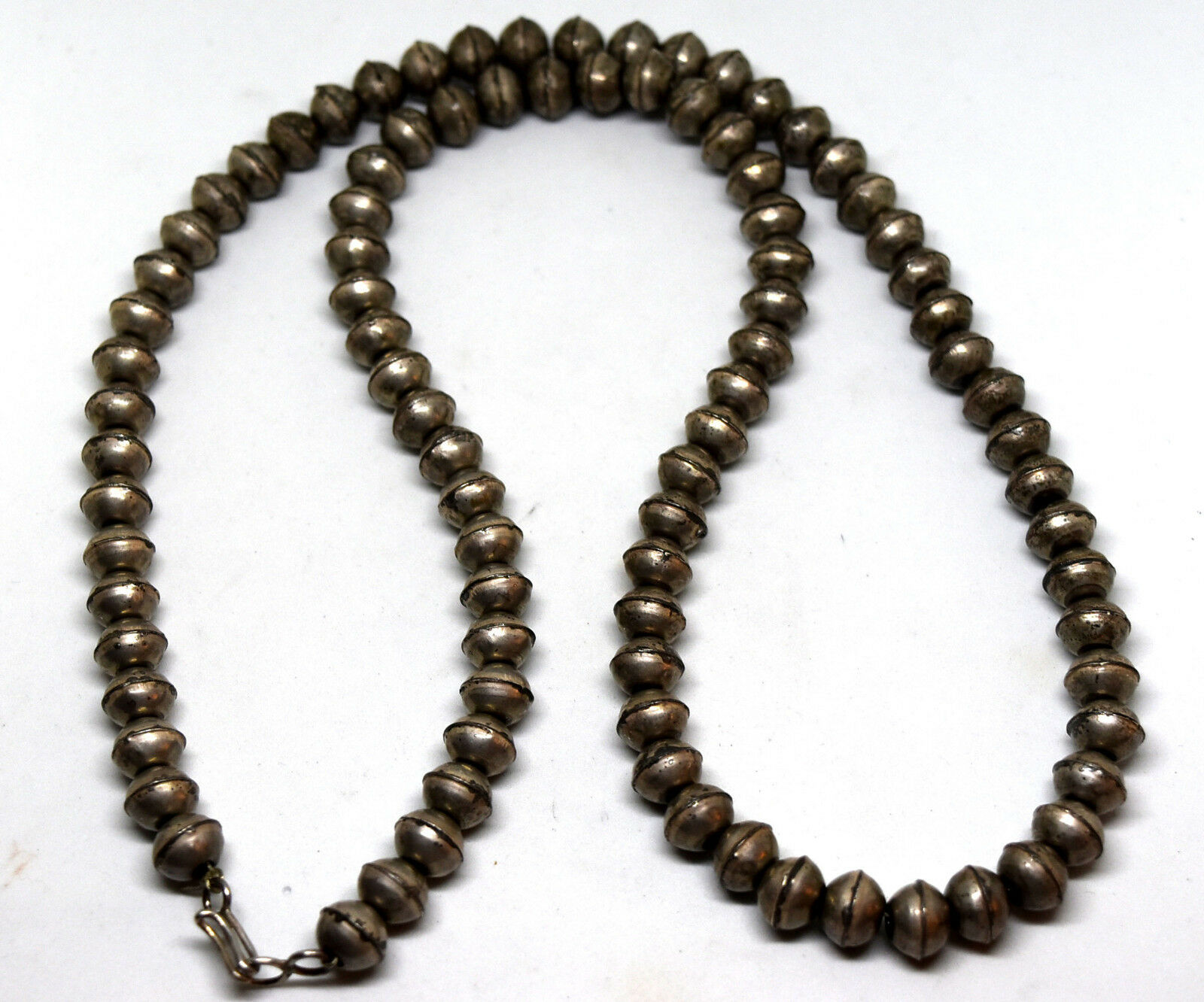-40%
115grams Unique Double Technique Edward Benally Navajo Sterling Silver Bracelet
$ 287.76
- Description
- Size Guide
Description
This is an amazing vintage Navajo Edward Benally cuff bracelet. This outstanding bracelet contains a beautiful double side road runner and two. superior chrysocolla stones What I also love about this bracelet is the amazing movement u can change from Cryscolla stone to road runner side totally amazing cuff! This bracelet is very thick and sturdy. The width of the bracelet measures around 2"⅜ Sterling silver. Cir. 1970's+. The inside end to end measures around 5-1/4" with an additional 1"⅝ gap. Sturdy 115.9grams. Made by Edward Benally the chrysocolla stones are from the Bisbee mine The History of Navajo JewelryIf you understand the motive and history of the jewelry you are wearing, you will get to cherish the unique pieces more. Also, you will feel proud you are wearing a piece with a rich legacy. To understand the origins of native American jewelry, we have to travel back to the second half of the 19th century.
Navajo jewelry got its name after the tribe Navajo that arrived in the southwest of America between the 14th and 16th centuries. The first blacksmith from the Navajo, or Dine tribe, is considered to be Atsidi Sani. He was known as the “Old Smith”. It is believed that the first generation of Navajo craftsmen started taking up metalwork in the early 1840s. The first metalsmiths were taught by Mexicans in villages located in the northwest of New Mexico.
However, there is another point of view on where the Navajo craftsmen got their skills. There are also conjectures that the Navajo tribe learned the art of making silver jewelry from the Spaniards, which are the native Spanish people. How did the Navajo make their jewelry?
In the beginning, Navajo artists made different types of jewelry, but the most common were narrow rings, large buttons, bangle bracelets, simple ear drops, and hoop earrings. They also made different decorations for belts.
The metal of choice of Navajo artists was generally silver. However, they also worked with steel, iron, and copper.
One of the most interesting Navajo jewelry facts is how the craftsmen got their silver to make jewelry. Instead of purchasing ready-to-use silver, they melted silver coins (especially the Mexican currency) and candlesticks so they could have silver to work with.
Once they got the silver, the Navajo continued with pouring it into a simple mold. That’s how they formed ingots, which were later pounded into thin sheets.
Initially, they used primitive tools made from discarded scraps of iron and steel. For polishing, they used fine sand or ashes, and for buffing, the Navajo used buckskin. Later, they traded them for manufactured files, shears, and hammers.








